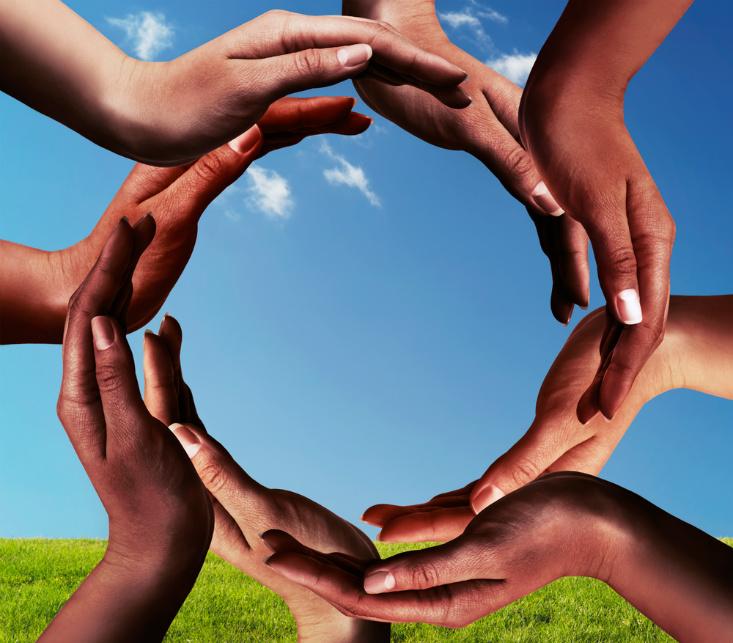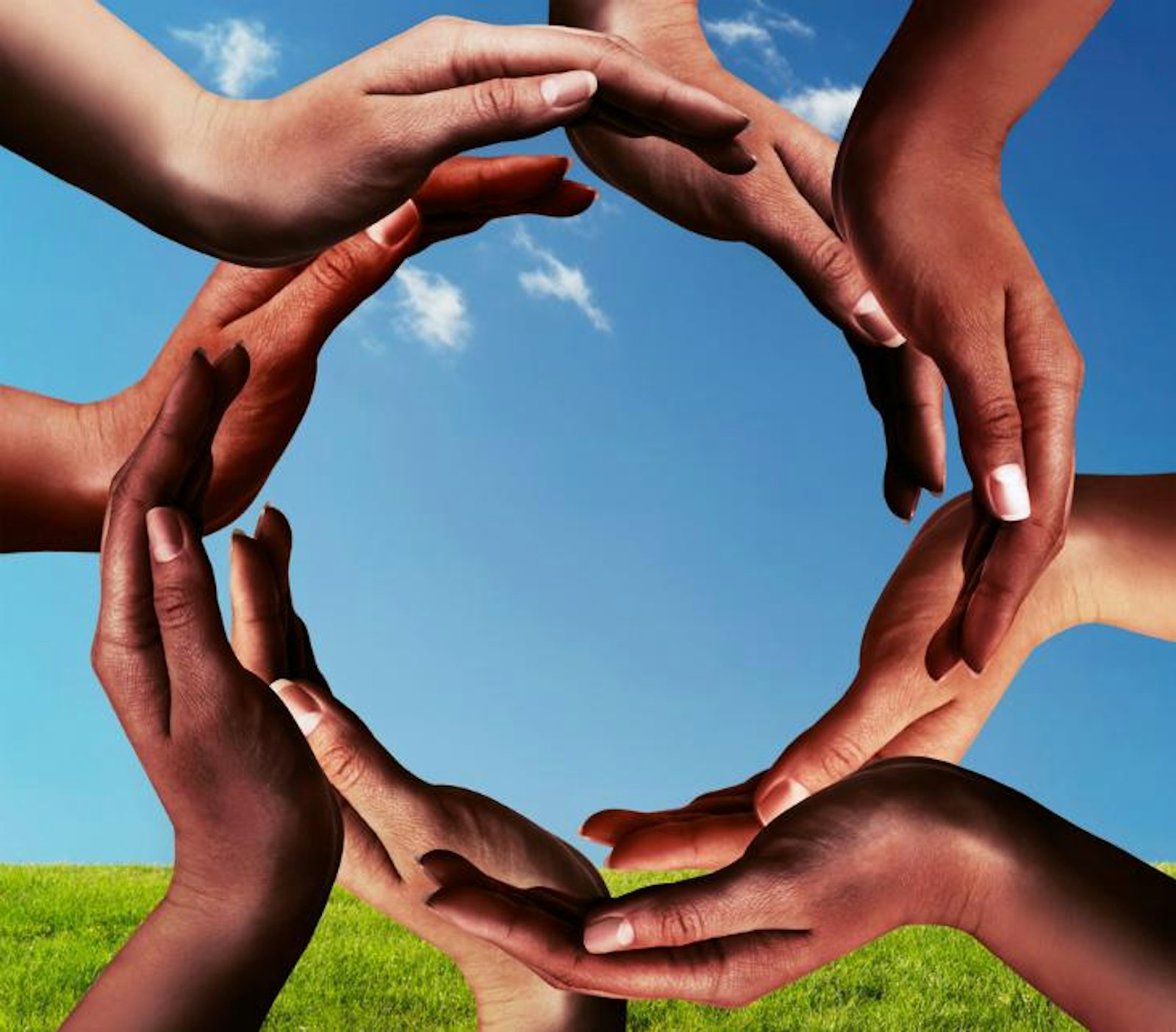
I am a light-skinned woman, I grew up in the Southern United States, and I harbor negative stereotypes about dark-skinned people. I dislike this about myself. I would like to pretend that this is not true, but I have proof.
About 15 years ago I found myself making a stop for gas in a somewhat economically stressed part of Atlanta, Georgia. As I stood there fiddling with the pump, feeling vulnerable, an African-American man approached me. He said something to me. “I don’t have any money,” I said, looking away. “Really?” he said. “I just asked you for directions!”
As I fell over myself attempting apology he walked away to ask someone less bigoted. I have never been more embarrassed. I looked at him again. He was well-dressed. He was articulate. The man was clearly not drunk, high, or in need of my money. But at first look I saw none of that. I saw the color of his skin.
Race is, to a great degree, a social construct. The idea that similar physical human traits automatically point to a set of similar genetic material has been proven false. The genetic differences between two individuals from the same race are often much larger than the differences between average individuals from two different races.
But human brains are wired to react otherwise. It doesn’t matter whether it is skin color, religion, political idealology, social class, or sexual identity. We appear to have evolved a predisposition to classify people as “like me” or “unlike me.” Skin color is just easier to identify from a glance than someone’s politics. This tendency to discriminate against “out groups” is why we sometimes find people hitting each other for no other reason than they enjoy supporting a rival sports team.
Almost everyone has some level of racial bias, but it seems us infected with the condition can change. People who acknowledge their biases and work to reverse them can make progress. At least, we can change our conscious, overt biases. What about the bias within?
In two studies from the lab of University of London-based researcher Manos Tsakiris, and another led by Mel Slater at the University of Barcelona, researchers have found that people’s unconscious racial biases can decrease, at least for a short time. The key to reducing our biases against people in “out groups” may be convincing ourselves that we belong to those very groups.
In 2012 Tsakiris’s lab published an article in the journal Consciousness and Cognition titled, “Beyond the color of my skin: How skin color affects the sense of body-ownership.” Led by graduate student Harry Farmer, the team set out to find whether they could use a mind trick called the “rubber-hand illusion” to make self-identified white people feel as if a dark-skinned hand was their own.
The rubber-hand illusion is a fascinating and valuable psychological tool. In a typical scenario, a study participant sits and places her hands palms-down on a table. The experimenter blocks the participant’s view of one of her hands with a partition and substitutes a false hand that the participant views instead. Then the experimenter uses a brush to stroke both the participants’ hidden real hand and the viewed false hand, in exactly the same place, in the same way. The combination of visual and tactile information can convince the participant’s brain that the false hand belongs to her body.
Just before and after performing the rubber-hand illusion, the Farmer team administered a series of computer-based tests to establish participants’ implicit racial bias—that is, bias against dark-skinned people. The test (pdf) is crafty, because the researchers have to determine a subject’s unconscious bias, rather than how she wants to feel or how she wants others to believe she feels. The test teases out implicit bias by measuring how fast study subjects respond (by tapping certain letters on a keyboard) to certain word groupings. The idea is that if the subject is faster to categorize a word like “dark” with negative ideas like “vomit” and “torture” than with positive ones like honor and joy, that can indicate a subconscious bias against dark-skinned people.
It didn’t matter how racist the participant was to start—the mental experience of “claiming” a dark-skinned appendage made her less so.
Farmer’s team found that the rubber-hand illusion can in fact convince the brains of white people that a dark-skinned hand is part of its body. Even more interesting, the strength of this illusion did not appear to depend on how racially biased the participants were. Instead, the more participants felt that a false hand was theirs, the less subconsciously racist they tested after the experiment. But the results were a little muddy. As a control, the researchers also used a light-skinned fake hand in the experiments. Perhaps, the researchers wrote, the white hand diluted the data.
Tsakiris’s group published a follow-up study the next year, led by Lara Maister. This time the team used dark-skinned hands only. These experiments confirmed that the illusion of dark skin reduced bias regardless of individual differences in pre-experiment racial attitudes. It didn’t matter how racist the participant was to start—the mental experience of “claiming” a dark-skinned appendage made her less so. And the more the participant identified with the dark hand, the more her implicit racial bias decreased.
Maybe, though, the participants aren’t really empathizing with dark-skinned people. Maybe instead their brains responded to a feeling of vulnerability or dissonance. Maybe the effect was simply a result of an unexpected skin color.
A 2013 paper by Tabitha Peck and colleagues answers that question. Here researchers use a virtual-reality headset instead of the rubber-hand illusion. The self-described white participants viewed their virtual bodies as light-skinned, dark-skinned, or purple-skinned. A similar test measured participants’ implicit racial bias before and after they explored a virtual hallway and looked in a virtual mirror. The white body and the purple body did not change implicit bias. Only the dark-skinned body did.
Clearly the study subjects didn’t really believe they were dark-skinned people exploring a hallway, but the effect was enough. Avatars feel like real people. Other reports have found that although an avatar has no guaranteed connection to the real player’s actual appearance, racial discrimination continues in virtual game space. Some players with dark-skinned avatars have even confessed to adopting lighter-skinned bodies to avoid negative experiences.
So viewing ourselves as members of an “out group” reduces our biases against that group. But how long does it last? One study on the rubber-hand illusion finds that the effect can last at least in part for six months. Is there any chance that the subjects in these studies are permanently less biased? “To be honest we just don’t know,” Farmer says. The researchers never got back in touch with the participants, so they have no way to measure permanence. Right now the group is working to see if the technique can also change people’s reactions to typically African facial features, which are often subject to negative bias separate from skin color. Farmer, Maister, and Tsakiris reported in January that the rubber-hand-illusion could indeed help on that count, as well.
Each of these studies included around 100 participants or fewer, so replication would add rigor to the conclusions. Aliya Saperstein, a sociologist at Stanford University, agrees that before this work could translate into any kind of therapy, the “effects would have to be demonstrated outside of the presumably young, college-educated populations.” Still, the idea that to reduce our biases we need to visualize ourselves as different people makes sense. Previous research has shown that mimicking other people’s actions can increase empathy. Perhaps fighting football fans should be sentenced to walk about in a rival’s jersey. Saperstein suggests another way to put racism-fighting mental tricks to work: “It would certainly be amusing to sit in on a hiring or admissions committee meeting where the decision makers were wearing virtual reality equipment and experiencing themselves as someone of another race at the same time they were judging people’s resumes.”
Since the horrifying day when I was forced to face my own biases, I have worked to acknowledge and push back against them. It is reassuring that researchers are investigating these questions and that they are finding tools we can use to help us change for the better.
Jenny Morber is a freelance science writer with diverse and eclectic interests. She works to overcome her own biases in Fairfax, Virginia.






























